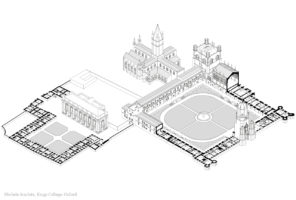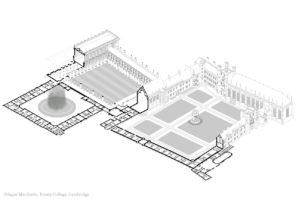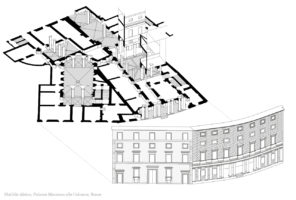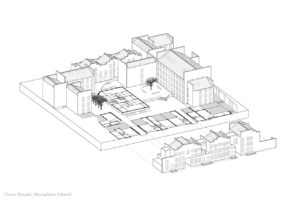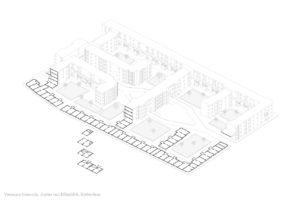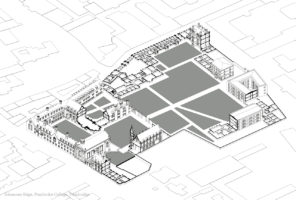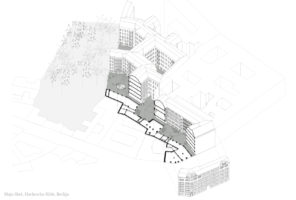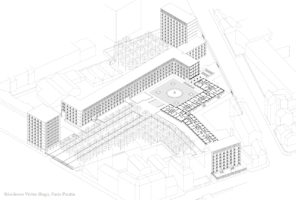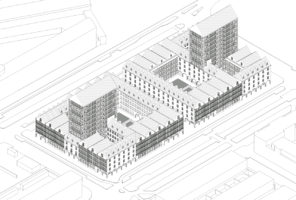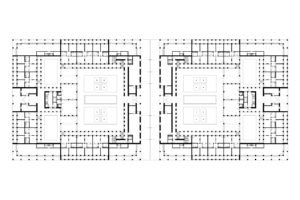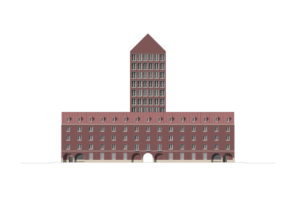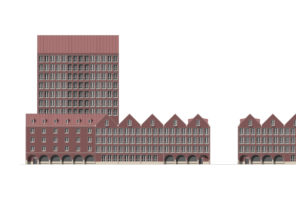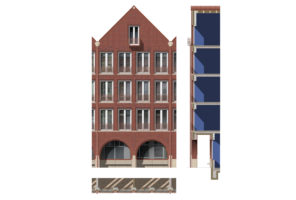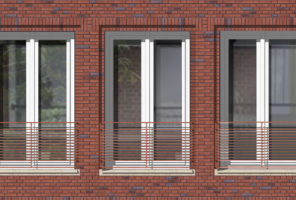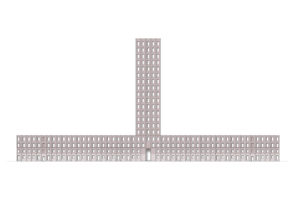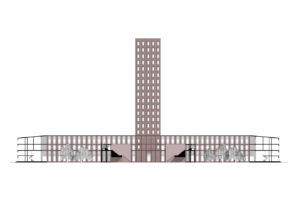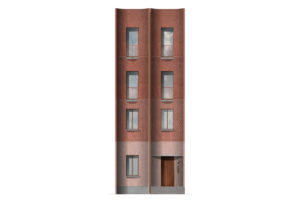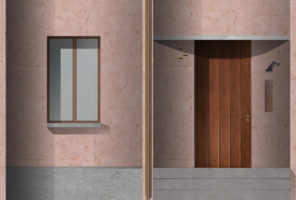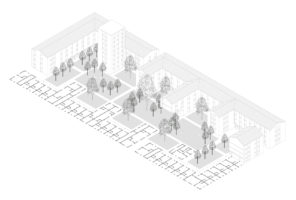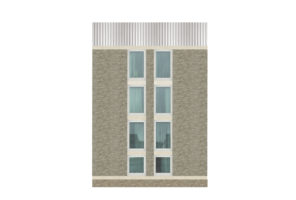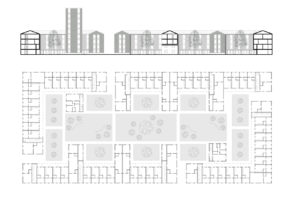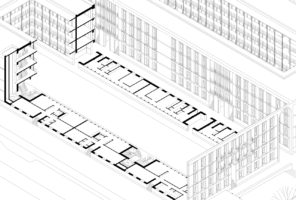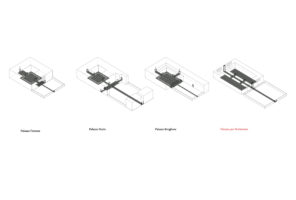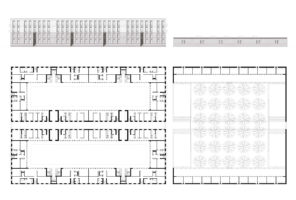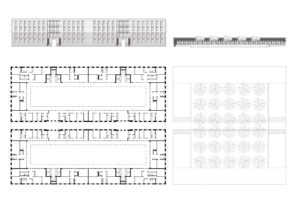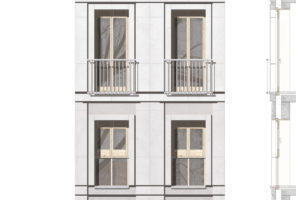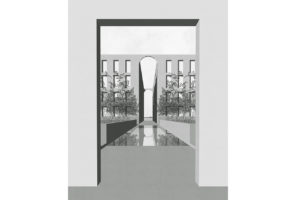22 July 2021 – My students of the design studio Palazzi per Rotterdam have presented their work. As a guest of the TU Munich, I supervised a group of eight students of different nationalities. Almost naturally, my fascination for the Italian residential palazzo was central in my teaching. But how to turn this into a design for/ per Rotterdam?
In preparation for their design, the students each examined a historic housing complex on an urban site. This resulted in a series of cut-away isometrics that provide insight into the organisation and the image of the complexes. Next, the students designed a housing complex on an empty site in South Rotterdam. The starting point was the use of two housing types: the tower and the palazzo. The results of Palazzi per Rotterdam are impressive.
Johannes Büge designed two identical palazzos on either side of a pedestrian street. The palazzos have three inner courtyards where the towers stand. The image is derived from the brick architecture of the classic Dutch town house. The load-bearing facades are solid, while the other facades are transparent. This difference creates liveliness in the facades, which is particularly evident at the corners.
Franziska Kulinski divided the plot in a similar way. However, the two palazzos are connected by a slender residential tower that closes off the space between them and thus forms the entrance to a small square. She designed undulating façades of coloured foam concrete.
Veronica Giancola’s proposal was deceptively simple. Within a single large block, smaller entrance courtyards are created on the inside, in front of which the palazzi are located. A residential tower and a bridge building differentiate the inner space. The facades are equally understated. They are simple, buildable masonry facades with a pitched roof.
Julia Nick conducted thorough research into the Italian palazzo and its relation with the courtyard and garden. This led her to propose two elongated palazzos on either side of an alley. The alley offers a view of the monumental Hef Bridge to Noordereiland and opens onto a walled garden that is publicly accessible during the day. The outer storage spaces of the dwellings are located along the garden. These have been designed as small living spaces, a sort of beach houses, so that residents can stay there when they are using the garden. The facades are also unusual. Julia Nick developed a formwork system for on-site poured façades with a remarkable graphic. The work of the artist Lauretta Vinciarelli proved to be a good reference for developing her plan.
The other students were just as meticulous in dealing with the peculiarities of the location in South Rotterdam. They are realistic Palazzi per Rotterdam. Evaluating the studio, one of the Italian students remarked: ‘It took a Dutch professor teaching in Munich to make me understand the value of this house type of my home country.’

